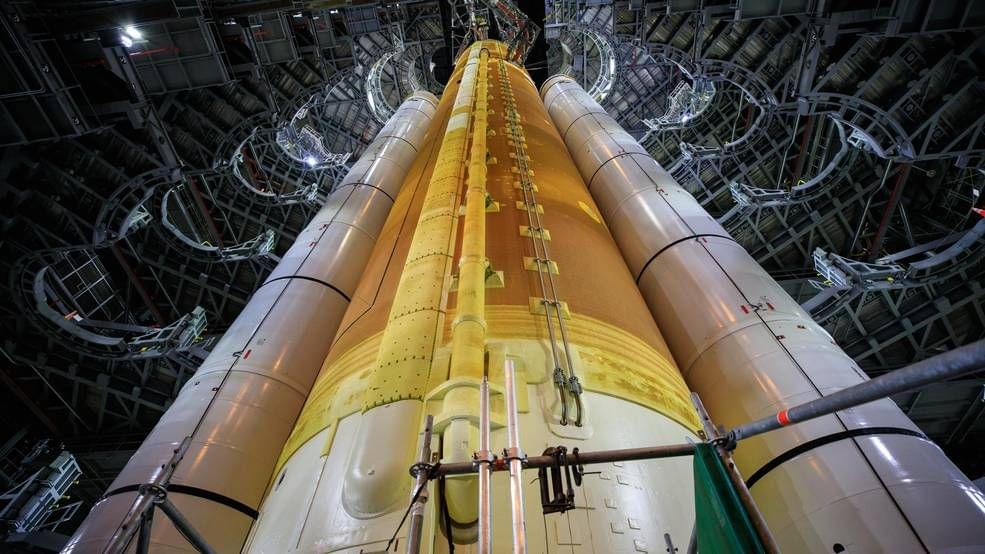Page 5385
Feb 25, 2022
NASA’s Artemis 1 moon mission, 1st flight of new megarocket, won’t launch until May
Posted by Gemechu Taye in category: space
Feb 25, 2022
The solar wind: how the Sun makes its own space weather
Posted by Gemechu Taye in category: space
Feb 25, 2022
Colossal Black Holes Locked in Dance at Heart of Galaxy
Posted by Gemechu Taye in category: cosmology
Feb 25, 2022
A Spinal Cord Implant Allowed Paralyzed People to Walk in Just One Day
Posted by Kelvin Dafiaghor in category: biotech/medical
After five months “performance improved dramatically,” the authors said. All three people were able to sustain their own weight, standing independently in their daily lives. With the help of a walker, they could easily stroll for six minutes without any other assistance. Michel was even able to climb up stairs with minimum support.
The trio celebrated their newfound freedom. With the stimulator helping with their trunk position—aka “core strength” and posture—they were able to enjoy everyday life. Standing while sipping a drink at a bar. Paddling a kayak on a lake. Taking a lap in the pool.
The stimulation further helped with muscle recovery. All three men found a boost in their leg and trunk muscle mass, and two were eventually able to control some muscle function even without stimulation.
Feb 25, 2022
Russia official warns of “uncontrolled deorbit” of ISS, a beacon of international space science
Posted by Atanas Atanasov in categories: science, space
![]()
Dmitry Rogozin, the head of Russian space agency Roscosmos, issued a stark warning.
The future of the ISS has come into question amid conflict in Ukraine. Dmitry Rogozin, the head of Roscosmos, has warned that blocking cooperation could have catastrophic consequences.
Feb 25, 2022
Artificial neurons connect to biological ones to control living plants
Posted by Jose Ruben Rodriguez Fuentes in categories: biological, chemistry, computing, space
Nature is a never-ending source of inspiration for scientists, but our artificial devices usually don’t communicate well with the real thing. Now, researchers at Linköping University have created artificial organic neurons and synapses that can integrate with natural biological systems, and demonstrated this by making a Venus flytrap close on demand.
The new artificial neurons build on the team’s earlier versions, which were organic electrochemical circuits printed onto thin plastic film. Since they’re made out of polymers that can conduct either positive or negative ions, these circuits form the basis of transistors. In the new study, the team optimized these transistors and used them to build artificial neurons and synapses, and connect them to biological systems.
When the transistors detect concentrations of ions with certain charges, they switch, producing a signal that can then be picked up by other neurons. Importantly, biological neurons operate on these same ion signals, meaning artificial and natural nerve cells can be connected.
Feb 25, 2022
Lab-Grown Pancreas Reverse Diabetes In Mice
Posted by Quinn Sena in categories: biotech/medical, genetics
Circa 2017
AsianScientist (Feb. 8, 2017) – Mouse pancreases grown in rats generate functional, insulin-producing cells that can reverse diabetes when transplanted into mice with the disease, according to researchers at the Stanford University School of Medicine and the Institute of Medical Science at the University of Tokyo.
These findings, published in Nature, suggest that a similar technique could one day be used to generate matched, transplantable human organs in large animals like pigs or sheep.
Continue reading “Lab-Grown Pancreas Reverse Diabetes In Mice” »
Feb 25, 2022
The Future of Cooperation in Space May Permanently Alter Because of Russia’s Invasion of Ukraine
Posted by Len Rosen in categories: futurism, space
Roscosmos’s head warns the ISS mission could end with a destructive deorbit in a threat to the US, EU and other countries.
Feb 25, 2022
ESA to set up committee to study human space exploration options
Posted by Kelvin Dafiaghor in categories: futurism, space
WASHINGTON — The European Space Agency will establish a committee with representatives from both inside and outside the space industry to develop options for a European human space exploration program.
The creation of what ESA called a “high-level advisory group” was one of the major outcomes of a one-day “space summit” held in Toulouse, France, Feb. 16 that brought together representatives of member states of both ESA and the European Union to discuss future European space initiatives.
Josef Aschbacher, director general of ESA, said the proposal for the advisory group came from French President Emmanuel Macron. “We got a very clear message from President Macron that such a group is needed. He has asked ESA to put the group together,” he said at a press conference at the end of the summit.

















